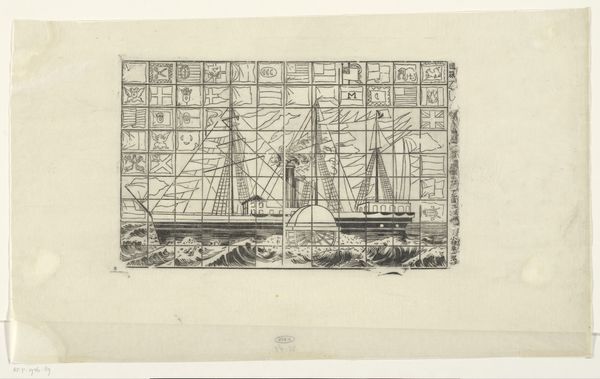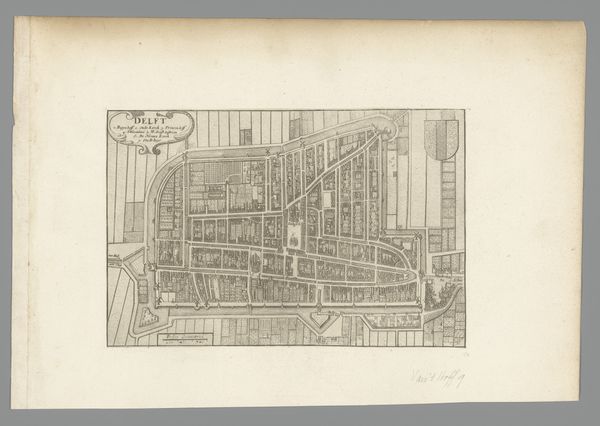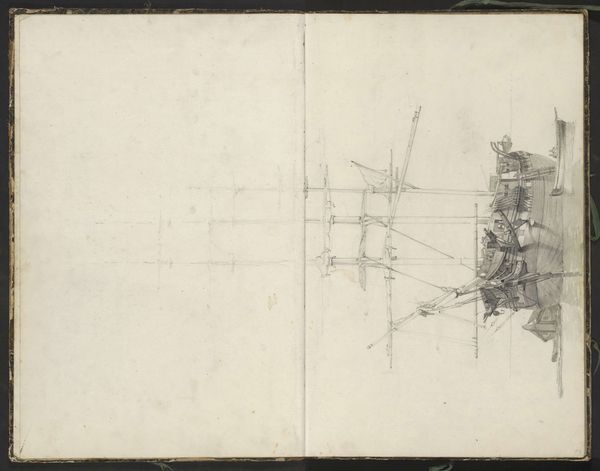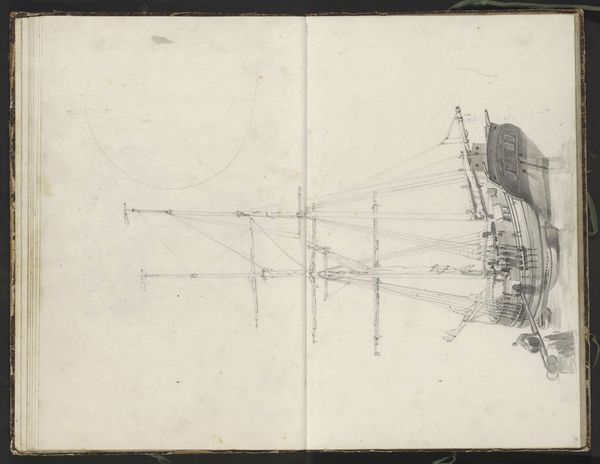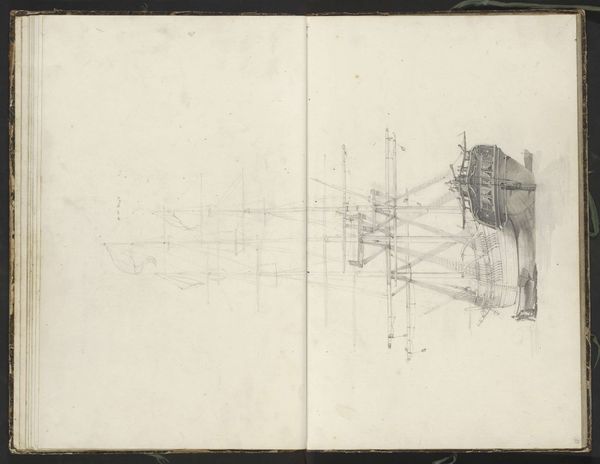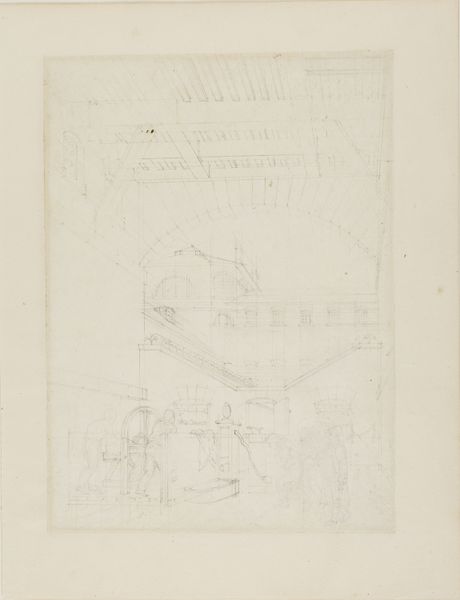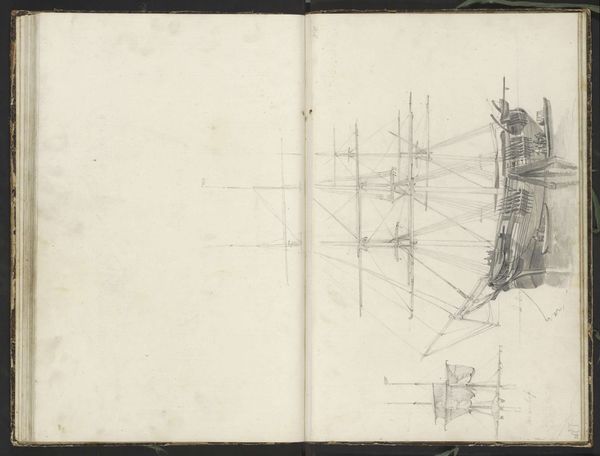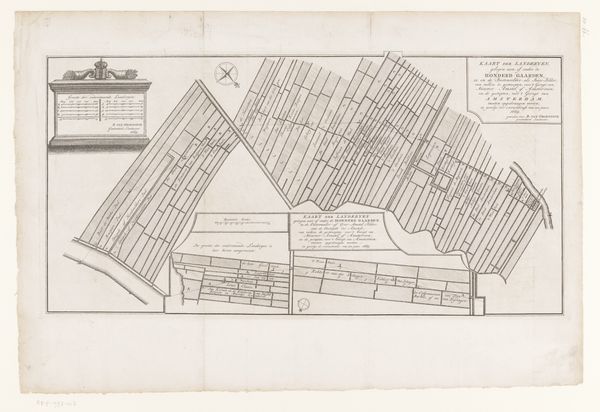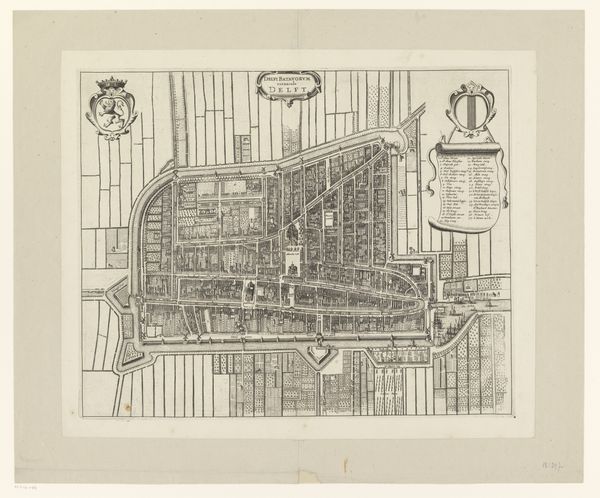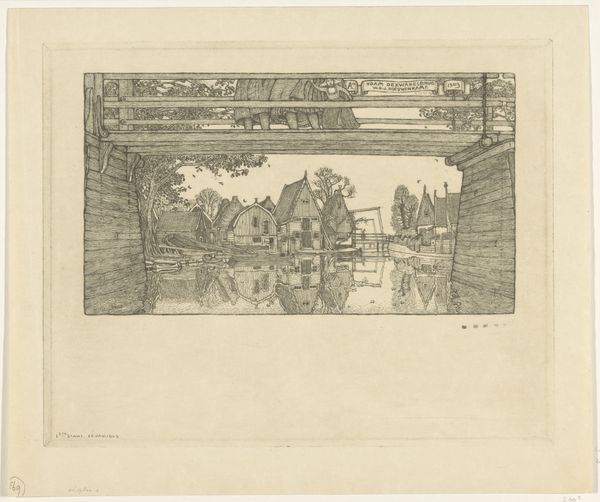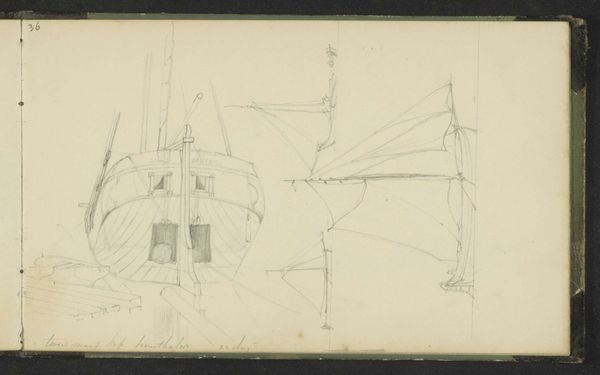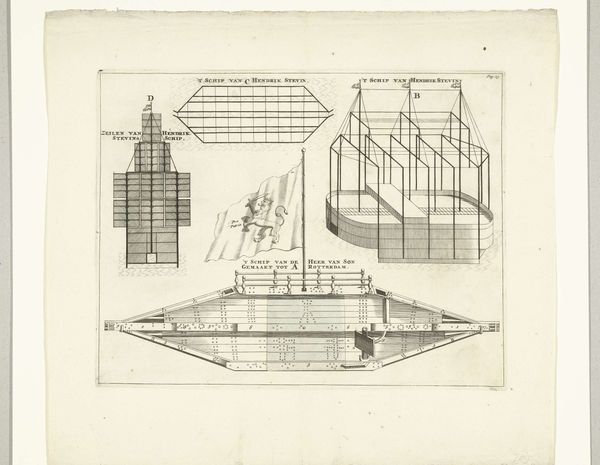
drawing, print, paper, ink
#
drawing
# print
#
paper
#
ink
#
geometric
#
symbolism
#
cityscape
#
modernism
Dimensions: height 314 mm, width 534 mm
Copyright: Rijks Museum: Open Domain
Editor: So, this is "Raderboot (bovenste blad)," created by Samuel Jessurun de Mesquita between 1883 and 1942, a drawing done in ink on paper. I’m struck by its unusual grid-like composition; it gives the steamboat and surrounding maritime flags an almost fragmented appearance. What stands out to you when you look at this piece? Curator: The immediate thing I notice is the work's intense focus on the means of production. Here, we see printmaking, typically viewed as a 'lesser' art, elevated. The artist isn’t shying away from the mechanics - the grid - of image construction and dissemination. Consider the historical context; how the mechanization of both transportation, via the steamboat, and art production, via printing, were rapidly changing society and labour? Editor: That's interesting. It really challenges that high art/craft divide. The grid almost feels like it's commenting on mass production, or even early digital rendering. Curator: Precisely. How does the medium itself – ink on paper, a readily available and reproducible set of materials – affect our understanding? This isn't oil on canvas meant for a single collector; it’s inherently democratized by its very material and means of production. This availability allowed wider dissemination of images and, therefore, ideas. How does this relate to the proliferation of steamships and the expanding networks of global trade at the time? Editor: I see what you mean. The accessibility of the medium mirrors the increasing accessibility of travel and trade. It makes you think about the consumption of both images and goods during that period. It feels relevant today, actually. Curator: Exactly! De Mesquita masterfully uses these materials and processes to highlight the broader socioeconomic transformations taking place. It encourages us to look beyond surface aesthetics. Editor: It’s been so helpful to consider the materiality and means of production. I'll definitely look at art through that lens more often. Curator: Indeed! The more we delve into the processes and materials, the richer our appreciation becomes.
Comments
No comments
Be the first to comment and join the conversation on the ultimate creative platform.
